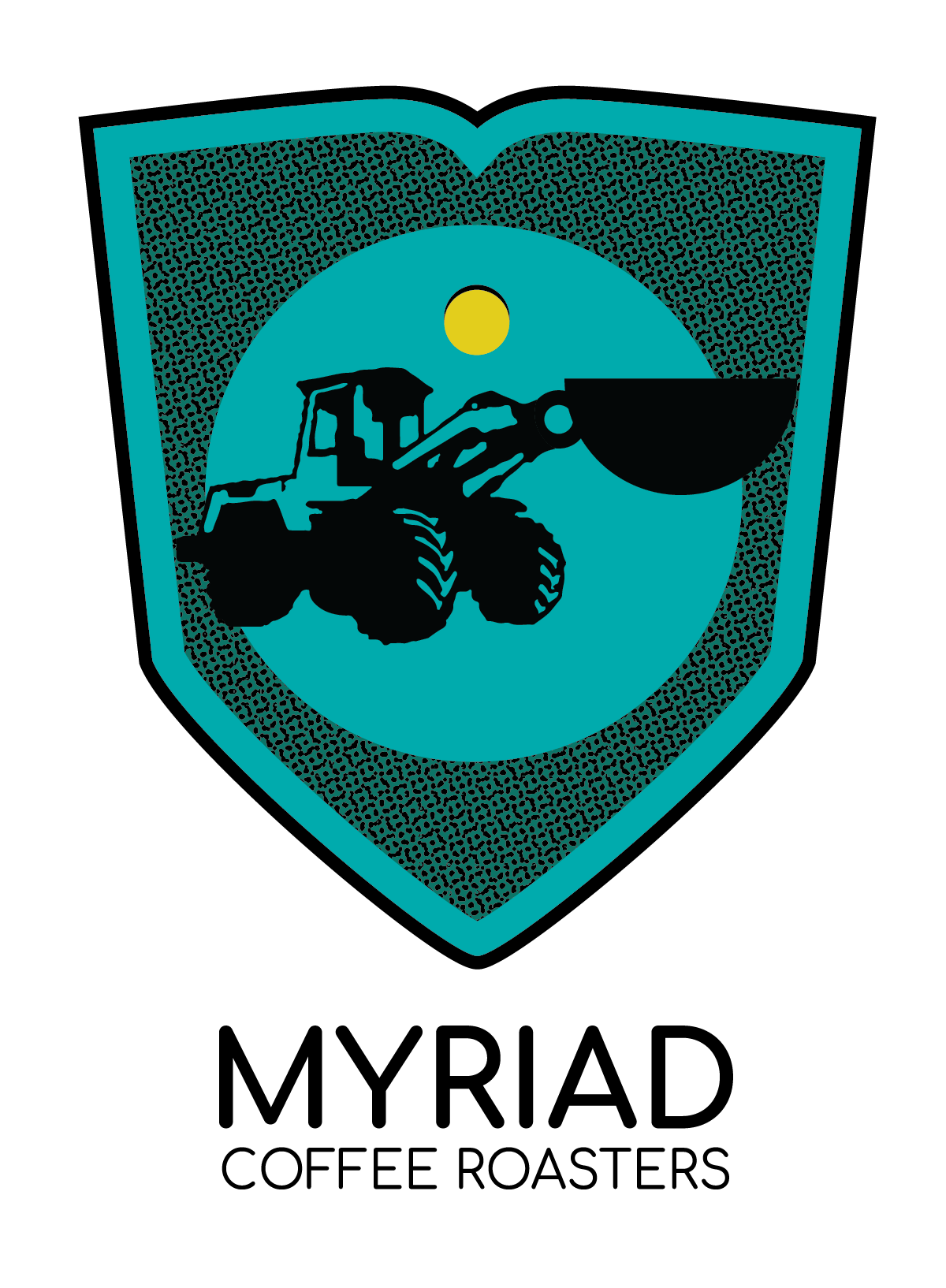 Image 1 of
Image 1 of


Buesaco E.A. Colombia Decaf
This coffee comes from farmer Azahar and the seven fincas that he works with. After careful sorting and sourcing of the ripest coffee cherries beans possible, the coffee undergoes a decaffeination process called ethyl acetate or EA for short. We suspect that the name rainbow comes from the fact that 7 different farmers as well as 3 unique varieties contribute to this amazing lot. The coffee itself is decaffeinated using sugar cane as well as berries and grapes from the local farms which accelerates the ethyl acetate process. This coffee's three different varieties are, Colombia, Castillo and Caturra.
This is a natural processed coffee from Medellin, Colombia. Decaf never tasted this good. E.A. helps keep the flavors of the coffee intact without imparting sugar sweetness. Having this coffee decaffeinated at the farm, allows the farmer to repurpose the water into other crops! Decaf still has about 4% caffeine so you can allow yourself a second “second cup”. Farmer Azahar, works closely with Cooperativa de Caficultores to source amazing lots. Grown at 1600 meters above sea level, this coffee is treated to a wash process lasting 10-12 hours of fermentation then mechanically dried for 36 hours. But what does it taste like? Butterscotch, cinnamon, tangerine and everything nice.
This coffee comes from farmer Azahar and the seven fincas that he works with. After careful sorting and sourcing of the ripest coffee cherries beans possible, the coffee undergoes a decaffeination process called ethyl acetate or EA for short. We suspect that the name rainbow comes from the fact that 7 different farmers as well as 3 unique varieties contribute to this amazing lot. The coffee itself is decaffeinated using sugar cane as well as berries and grapes from the local farms which accelerates the ethyl acetate process. This coffee's three different varieties are, Colombia, Castillo and Caturra.
This is a natural processed coffee from Medellin, Colombia. Decaf never tasted this good. E.A. helps keep the flavors of the coffee intact without imparting sugar sweetness. Having this coffee decaffeinated at the farm, allows the farmer to repurpose the water into other crops! Decaf still has about 4% caffeine so you can allow yourself a second “second cup”. Farmer Azahar, works closely with Cooperativa de Caficultores to source amazing lots. Grown at 1600 meters above sea level, this coffee is treated to a wash process lasting 10-12 hours of fermentation then mechanically dried for 36 hours. But what does it taste like? Butterscotch, cinnamon, tangerine and everything nice.
This coffee comes from farmer Azahar and the seven fincas that he works with. After careful sorting and sourcing of the ripest coffee cherries beans possible, the coffee undergoes a decaffeination process called ethyl acetate or EA for short. We suspect that the name rainbow comes from the fact that 7 different farmers as well as 3 unique varieties contribute to this amazing lot. The coffee itself is decaffeinated using sugar cane as well as berries and grapes from the local farms which accelerates the ethyl acetate process. This coffee's three different varieties are, Colombia, Castillo and Caturra.
This is a natural processed coffee from Medellin, Colombia. Decaf never tasted this good. E.A. helps keep the flavors of the coffee intact without imparting sugar sweetness. Having this coffee decaffeinated at the farm, allows the farmer to repurpose the water into other crops! Decaf still has about 4% caffeine so you can allow yourself a second “second cup”. Farmer Azahar, works closely with Cooperativa de Caficultores to source amazing lots. Grown at 1600 meters above sea level, this coffee is treated to a wash process lasting 10-12 hours of fermentation then mechanically dried for 36 hours. But what does it taste like? Butterscotch, cinnamon, tangerine and everything nice.
